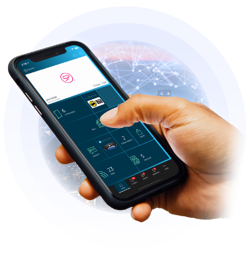Most brands have an online learning and development program, focused on educating retail store personnel about their products, and influencing brand mindshare. Some programs are super-rudimentary, like simple videos posted on a website or YouTube. Others utilize sophisticated modern LMS environments, allowing for proper content development, publishing and analytics, and mobile apps for deployment and instant reach.
At the end of the day, however, a best-in-class L&D program is one that delivers consistently high engagement and knowledge retention, and effectively transforms retail store associates into your brand advocates, ultimately driving a better consumer in-store experience and higher sales.
There are several key components that must work together to deliver such a program, and there are very few L&D platforms that can handle all of them. We will cover individual components in subsequent posts. In this one, we begin by focusing on the most-often-overlooked component – learning incentives and rewards.
Benefits of rewards-based training programs.
The key to a successful L&D program is to have those who sell your products engage with learning content because they want to, not because they have to. When this happens, learning flows naturally and blossoms into a learning culture. Without an incentivizing “carrot”, this is easier said than done.
The rewards component serves as the incentive to help not just get sales associates’ attention, but when executed properly, to also focus that attention on what training needs to be done, when and in what order of priority. Additionally, when associating training with something positive, like rewards, sales associates feel more appreciated for doing the work. They look at the rewards as an extra perk that motivates them to learn more about your brand, and to be more involved with your content.
Rewards can also be successfully utilized to reinforce learning retention over time, if your platform can handle such functionality. Happier and more knowledgeable sales associates have a positive impact on the customer experience, advocating brand awareness among consumers and driving more sales of your products.

Not all rewards programs are made equal.
Having an integrated rewards program has proven time and time again to be better than not having one, but not all program models drive the same results. In rare cases, a poorly planned program may even backfire. Additionally, some common incentive strategies are outdated, too complicated or too expensive to maintain. For example, deploying a point-based rewards catalogue program with no-expire points typically drives “point-hoarding” behavior where users are trying to save up their points so they can acquire the high-value awards. This behavior triggers multiple rolling issues over time:
- Low and medium value awards remain unclaimed.
- Satisfying an ever-growing demand for high value awards becomes cost-prohibitive.
- Not replenishing high value awards leads to substantial user dissatisfaction, drop-off and bad word of mouth.
Simply making points expire, on the other hand, creates the perception that high value rewards are unattainable, which also drives dissatisfaction and user drop-off.
Another good example of overused rewards strategies with limited impact are traditional sweepstakes, which carry high legal cost, local compliance complexities, and typically are able to drive spikes in engagement with very steep declines, instead of consistency.
There are ways to leverage all the benefits of points programs and sweepstakes without suffering any of the disadvantages - which brings us to gamification.
Gamifying learning and rewards.
There is a lot of talk about gamification of learning and not enough about gamification of incentives and rewards. If deployed separately, they each contribute incrementally to the L&D program:
- Gamifying the learning environment typically contributes to retention or caters to users’ need for achievement, or both.
- Gamifying rewards brings high engagement and entertainment value.
Applying gamification as the “bridge” connecting learning and rewards in one seamless experience is what we’ve learned triggers an exponential gain and leads to “best in class” L&D program output.
Bringing it all together.
Bottom line, there are many avenues you can take when devising or fine-tuning your brand training and advocacy strategy. Not all are created equal, or even possible without the right technology solution.

SellPro is the retail employee training, engagement and rewards platform specifically designed to bring together effective micro-learning, incentives, gamification and real-time communication in a single experience.


